
‘BALLUSION is a made up word to create a design futures metaphor. It conjoins Balloon and Illusion. The future may be inflated, or expanded. The future may be a faction or an illusion. It may be a mix of these.’ The workshop drew on a device in the LEXICON called BALLUSION designed to help master’s level design students to look more closely at the role of language in their design project, big or small, and its relation to futures.
On the role of language in a futures design project, Master’s Workshop #1. BALLUSION
Zoom, 27 March 2020
Workshop facilitators: Andrew Morrison and Palak Dudani
This workshop was carried out online with Master’s students within AHO’s Service Design 2 course with Associate Professor Josina Vink of the Institute for Design just after the lockdown in 2020. The Service Design Master’s students were working on a healthcare project, with focus on service ecosystems.
How might such students work with an activity like BALLUSION and relate its affordances for futures learning to their ongoing design project?
In this blogpost, we will take you through the process and reflections of a student participant at the workshop. We conducted this workshop using google document templates with embedded links and now go through its workings in a set of number moves.
- Focus on your project
The workshop began with a short activity asking master’s students to think about their current project and its relation to the future. They were asked to place it in time (near/ far off/ remote) and write 3 lines describing the project.
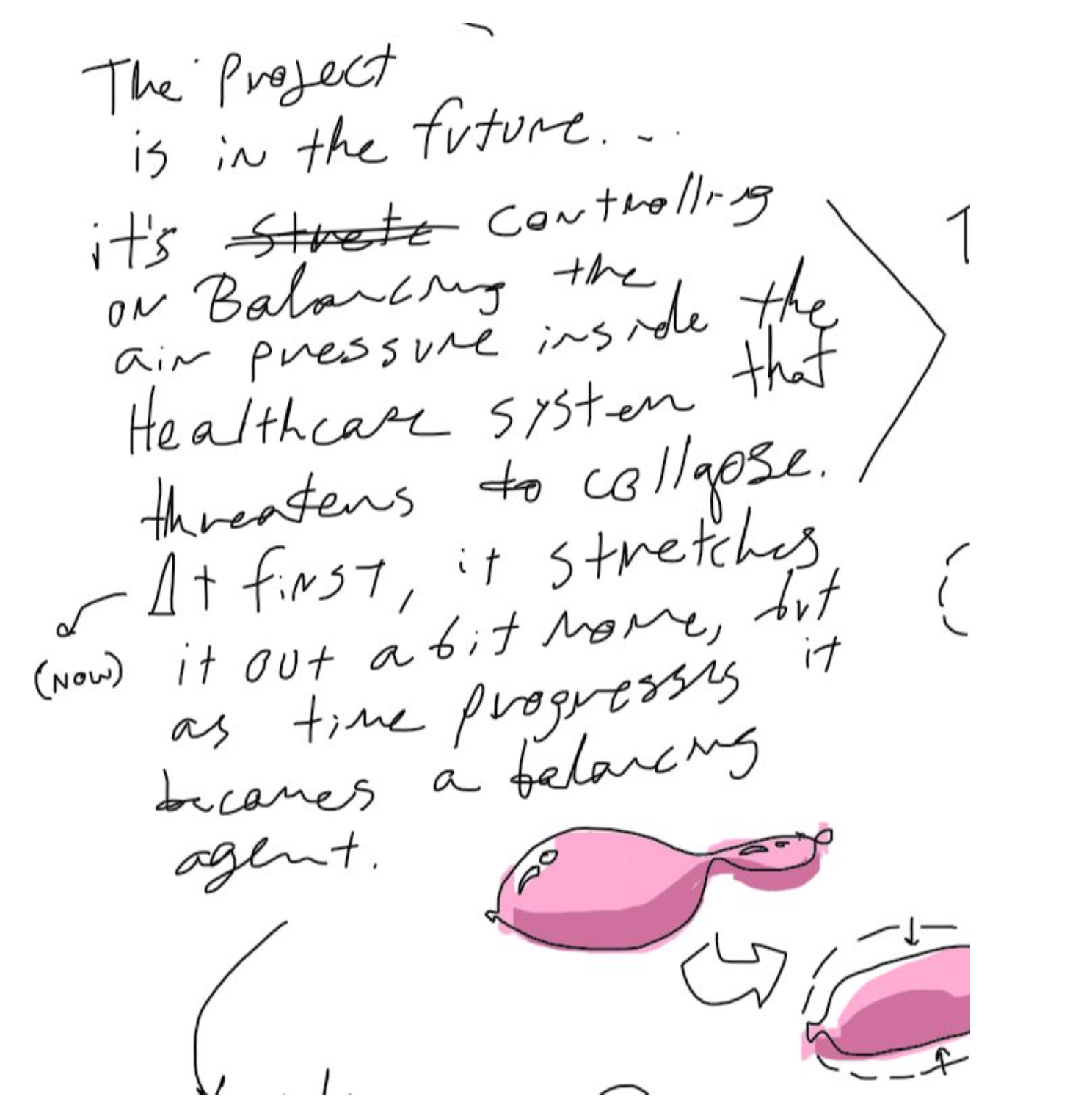
Student reflection on prompt 1: ‘Balloon & The project’
The student reflected on this saying “The project is in the future…It’s controlling or balancing the air pressure inside the healthcare system that threatens to collapse. At first, it stretches the balloon a bit, but as time progresses the project becomes a balancing agent.”
2. Design words for the future
The second prompt of the workshop asked students to read the 50 FUTURES DESIGN WORDS (words only). From this list, each student was pre-assigned a group of random words which they had to relate to their project. Once students got a sense of how to make connections with the words, they chose new 10 words from the list which were most relevant for their project (some may be the same words).
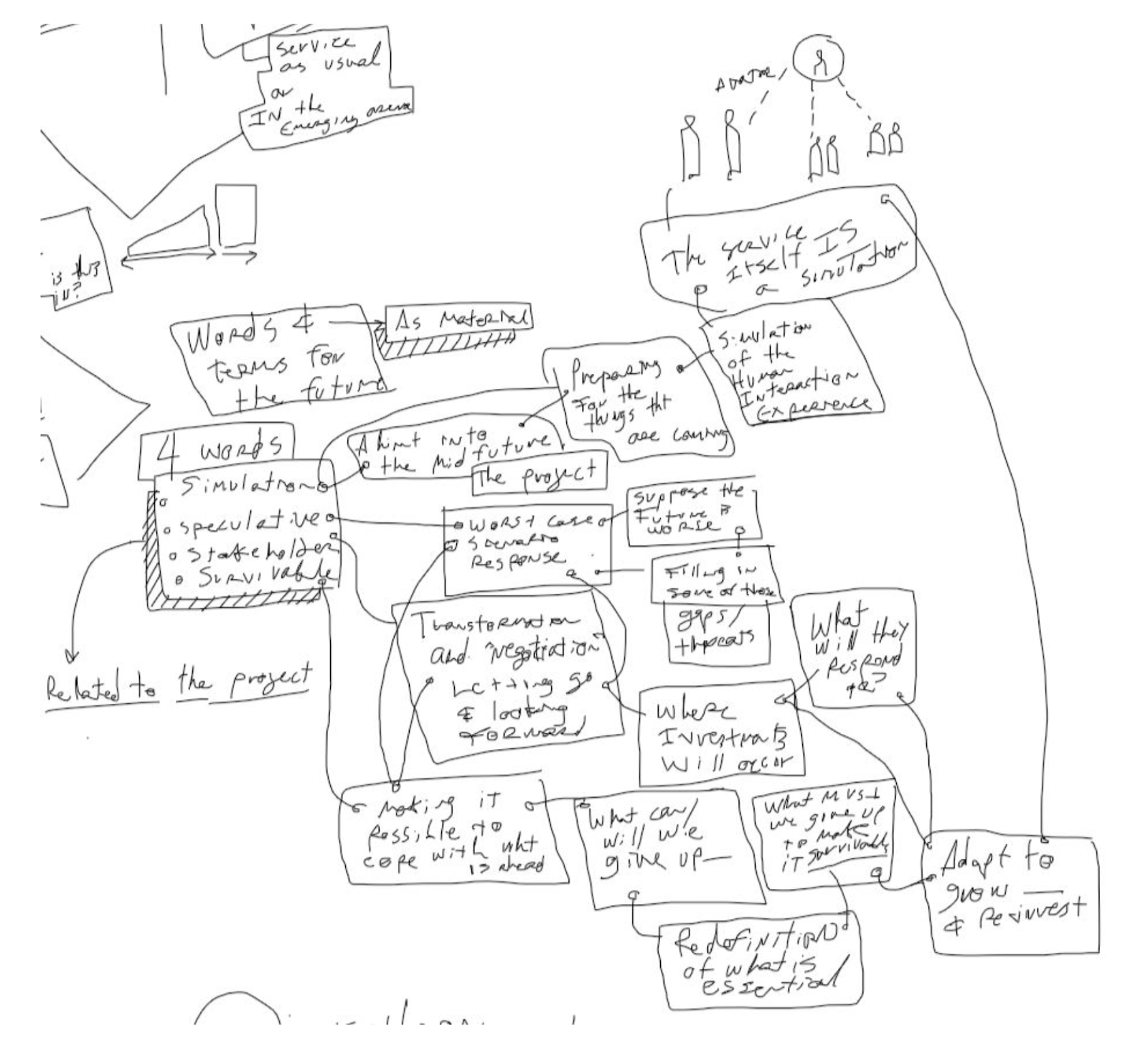
Student reflection on prompt 2: ‘Relating given words to the context’
- Inflating the balloon
The students were asked to imagine that they have a balloon where they can put their chosen 10 words and inflate it. They mentally tied a knot.
- Back from the future
The students mentally popped the balloon, releasing the words back into the present. These are the words that can be used to describe and define the future. Which of 10 words would they choose in the project they’re working on? Students selected 5 such words and related them back to their project/course/discipline. How are the words that work to prompt, project or even propel your project into the future?
- Write the future more clearly
As the third and final prompt, students were asked to look at the description they had written earlier and rewrite it including their 5 chosen words.
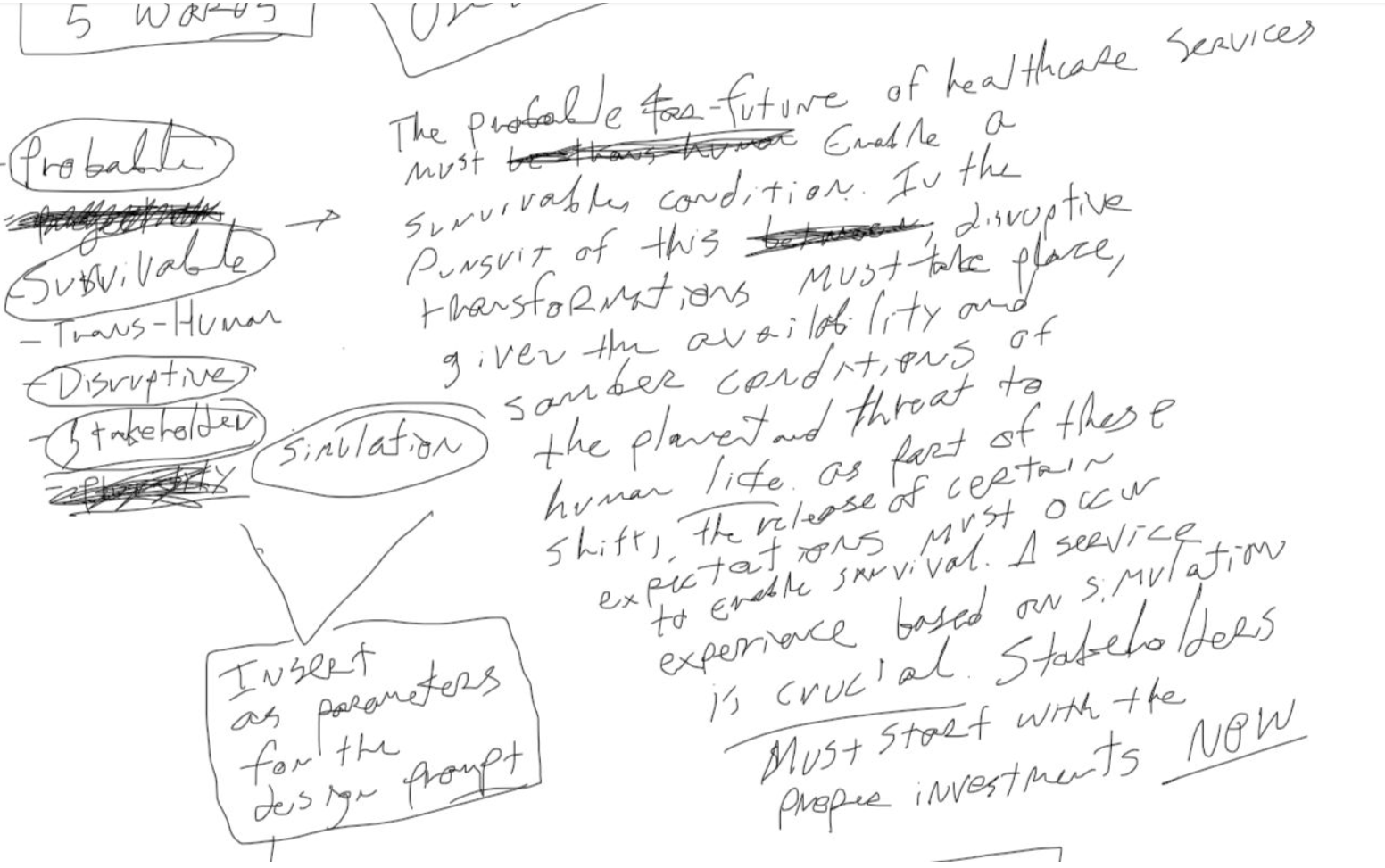
Student reflection on prompt 3: ‘Use the words to rewrite the project in a future scenario’
The student writes:
The probable future of healthcare services must enable a survivable condition. In the pursuit of that condition, disruptive transformations must take place, given the availability and somber conditions of the planet and the threat to human life. As part of these shifts, the release of certain expectations must occur to enable survival. A service experience based on simulation of face-to-face experience is crucial to make the transformation tolerable. Stakeholders must make the proper investment to enable this from NOW.
Having been through the whole workshop, the student summerises their reflections:
Working with the words helped in scoping a futures-noticing point of view and anchoring it to a framework that sparks discussion and ideation around it. As well as noticing important prompts – such as ‘simulation’- to take into account in the next part of our work. Simulation was a particularly useful word for me because it is related to the things the remote services must try to emulate in the future – where technology will be ever more present, but not necessarily the human touch.
Of course we wondered if this activity had supported not only the needs of the Service Design students but also the motivations of their teacher. Here’s what educator and researcher Assoc.Prof. Josina Vink commented afterwards:
… thank you for stimulating some good thinking about the vocabulary we are using to talk about the future. I think it helped provoke some much needed discussion about our common language as we move into the second phase of this project. The activities were incredibly useful.
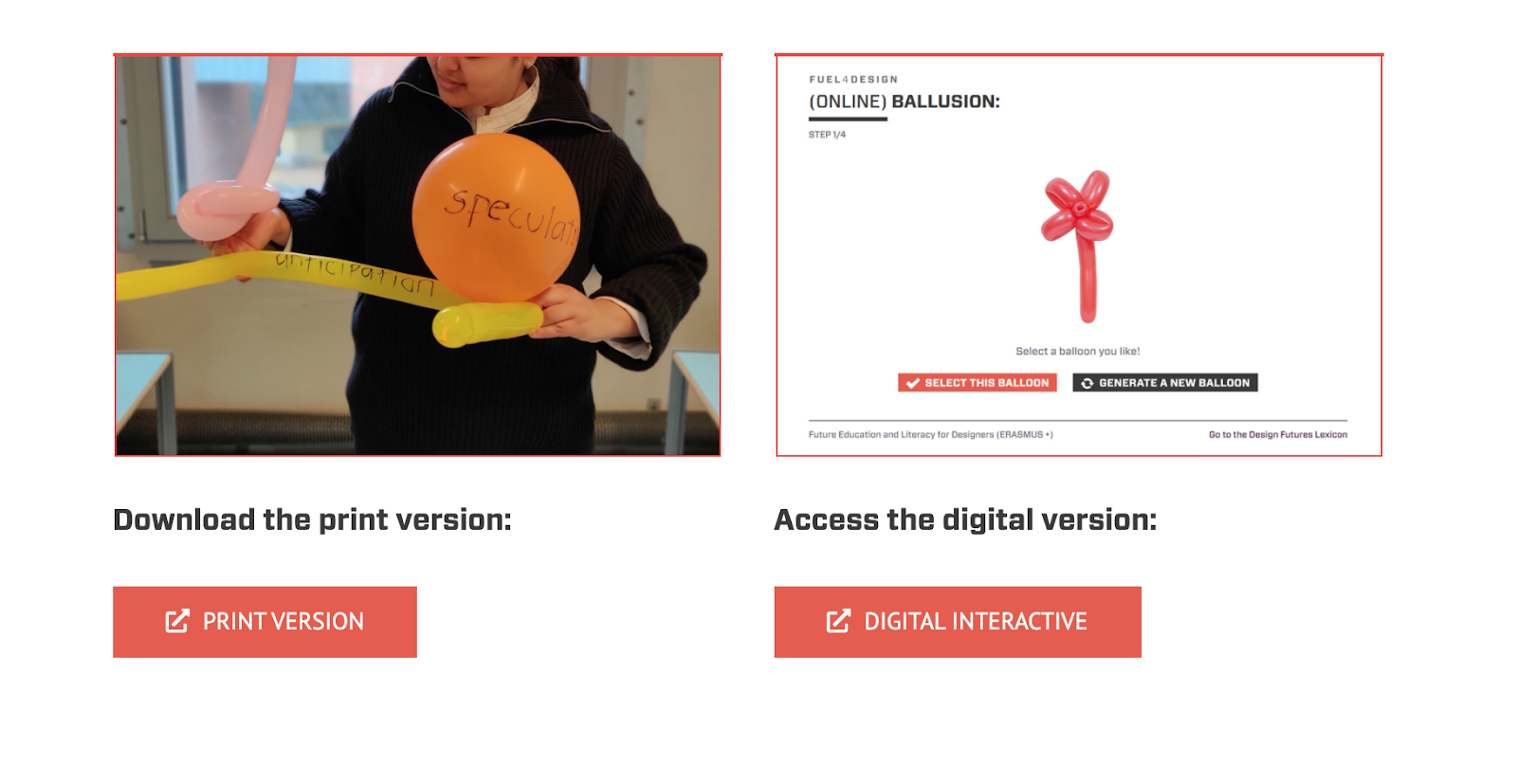
A screenshot of the BALLUSION page with both print and digital versions
Ballusioning on …
Building on this experience with the Master’s students and the in-person BALLUSION workshop with PhD students, a digital version was designed. This was made in collaboration with the French design studio Design Friction with whom we were collaborating on the LEXICON and project website.
You might also like to see a set of guided activities that we then developed further: UNIT 4.1 LANGUAGE AND METAPHOR (MASTER’S). Below we also point to an interactive version of BALLUSION we developed subsequently for use in online only settings. This was in direct response to the challenges and needs of distributed digital learning and design futures literacies enacted in the context of the COVID-19 pandemic.
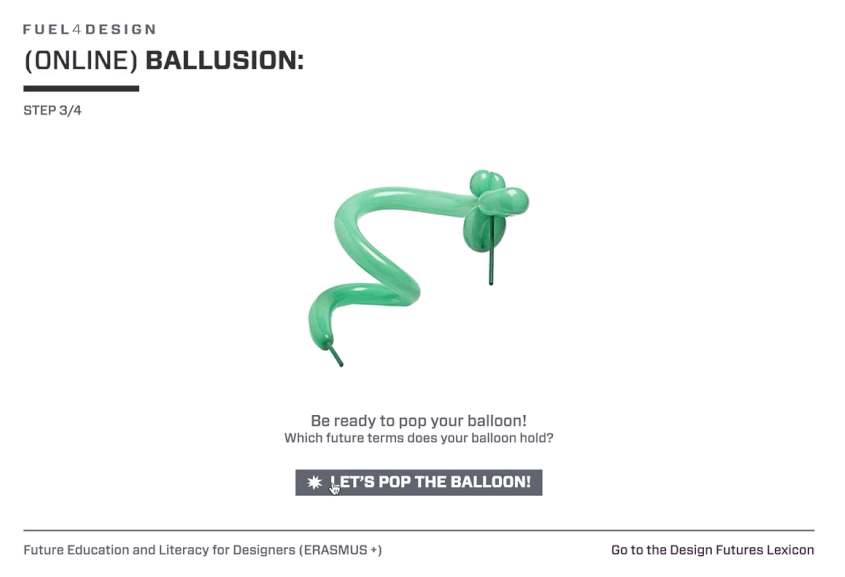
A glimpse of the interactive BALLUSION online